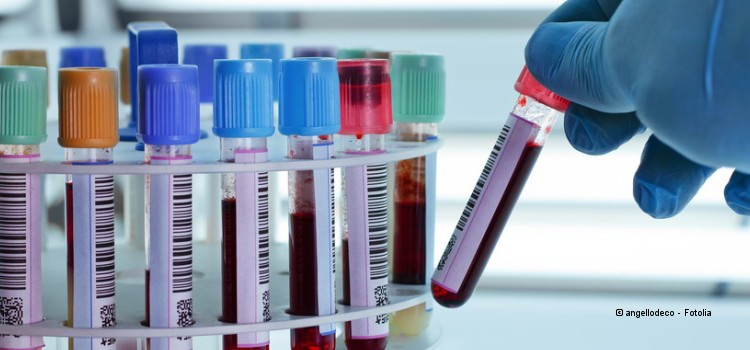Have I been infected with HIV? In the past, you had to wait three months after a risk situation to have an HIV test to rule it out. Martin Obermeier explains in an interview why modern laboratory tests now only take six weeks.
Mr Obermeier, you work in a Berlin laboratory where blood samples are also tested for HIV. To give you an idea: How many tests do you do per month? And how many infections are detected?
We carry out around 6,600 tests a year, that's around 550 tests a month. And of these 550, perhaps 15 or 16 are reactive on average, i.e. around three per cent. Most of the blood samples that we analyse come from HIV specialist practices, which explains the high rate of reactive tests, because a certain pre-selection has already taken place when people get tested there.
If you look at all HIV addiction tests carried out in Germany, the majority of tests are carried out as part of blood donations and before operations.
We have learnt the following: if you want to be sure that you are not infected after an HIV risk situation, you have to wait three months before taking an HIV test. Why three months?
These three months are based on recommendations that were adopted in the early 1990s: During the development of HIV antibody tests at the time, it had been seen that it took up to eight weeks for individual patients' immune systems to produce enough antibodies for the test to detect them. And in order to maximise safety, especially for blood donations, it was agreed that the test should be carried out at the earliest three months after the last risk situation.
The so-called diagnostic gap - i.e. the time in which an antibody test would not produce a result even though an infection is actually present - in the laboratory tests used today has halved to six weeks. Why is that?
The fourth-generation laboratory tests have been available since 2002 and 2003, and have been used almost universally since 2006 and 2007. These combination tests not only search for antibodies, but also for the p24 antigen. This virus component can be detected in the blood at an earlier stage, as the p24 level usually rises to a measurable level from the 14th day after infection.
An infection can then be ruled out after six weeks - if the antigen-antibody test does not "hit the mark", there is neither p24 antigen nor antibodies in the blood and you are almost certainly not infected.
What does "with a high degree of certainty" mean?
A high degree of certainty means that there are rare exceptions that have no real relevance due to their low incidence, or that certain constellations must be specially assessed.
At least for post-exposure prophylaxis after HIV contact, the time window until HIV infection can be safely ruled out only begins after the end of prophylaxis. However, no data is available for pre-exposure prophylaxis (PrEP). In this case, if an infection should actually occur despite the prophylaxis, an extension of the diagnostic window is also conceivable.
If you want to be on the safe side, wait another twelve weeks after an HIV risk until you are tested.

For most people, this information on the shortened diagnostic gap is new. Can you read about it somewhere?
Yes, the current European guidelines on HIV testing were published in 2014 and this information can be found on page 5. The German recommendations are currently being revised. I am also involved in this as a member of the Writing Committee, and I am optimistic that we will be able to publish the recommendations in the first quarter of 2015.
Okay, three months after the last HIV risk situation at the earliest, that was easy to remember. So now it's six weeks - but only for laboratory tests. The three-month rule still applies to rapid HIV tests, where you get the result after 30 minutes at the latest. Why is that?
The rapid tests used in some health authorities and testing projects are purely antibody tests, i.e. they do not react to p24. Rapid tests that can detect both antibodies and p24 would simply be too expensive at present.
One final question: Does this shortening of the diagnostic gap have any advantage at all?
Well, from conversations with test candidates, I know that for many it is a major concern to shorten the period of uncertainty. It does make a difference whether I have to wait three months or just six weeks before I can rule out an infection with a test, for example after a needlestick injury. Or after a high-risk HIV contact outside of my partnership - if I usually don't use condoms with my partner, it's easier to go back to using a condom or abstaining from sex for six weeks than for three months ...
Thank you very much for the interview.
